Matteo Interlandi
The Tensor Data Platform: Towards an AI-centric Database System
Nov 04, 2022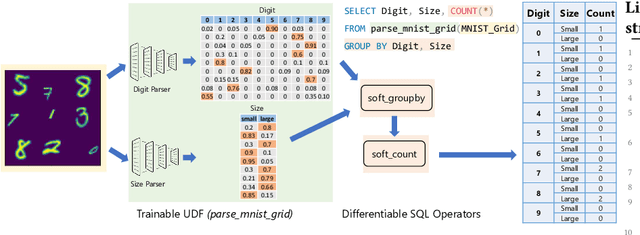
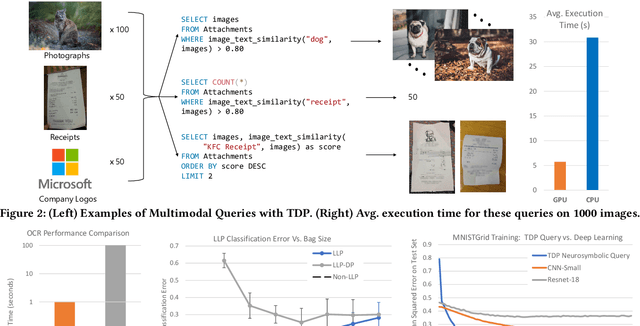

Abstract:Database engines have historically absorbed many of the innovations in data processing, adding features to process graph data, XML, object oriented, and text among many others. In this paper, we make the case that it is time to do the same for AI -- but with a twist! While existing approaches have tried to achieve this by integrating databases with external ML tools, in this paper we claim that achieving a truly AI-centric database requires moving the DBMS engine, at its core, from a relational to a tensor abstraction. This allows us to: (1) support multi-modal data processing such as images, videos, audio, text as well as relational; (2) leverage the wellspring of innovation in HW and runtimes for tensor computation; and (3) exploit automatic differentiation to enable a novel class of "trainable" queries that can learn to perform a task. To support the above scenarios, we introduce TDP: a system that builds upon our prior work mapping relational queries to tensors. Thanks to a tighter integration with the tensor runtime, TDP is able to provide a broader coverage of new emerging scenarios requiring access to multi-modal data and automatic differentiation.
Deploying a Steered Query Optimizer in Production at Microsoft
Oct 24, 2022
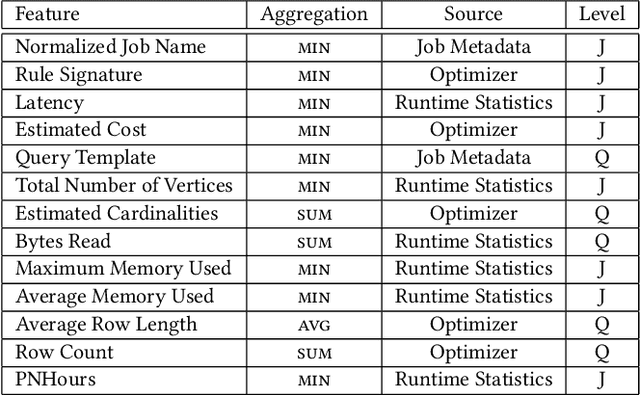
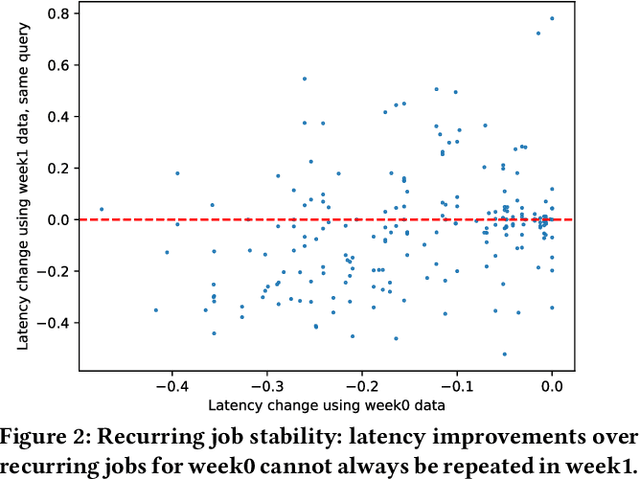
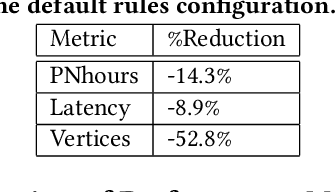
Abstract:Modern analytical workloads are highly heterogeneous and massively complex, making generic query optimizers untenable for many customers and scenarios. As a result, it is important to specialize these optimizers to instances of the workloads. In this paper, we continue a recent line of work in steering a query optimizer towards better plans for a given workload, and make major strides in pushing previous research ideas to production deployment. Along the way we solve several operational challenges including, making steering actions more manageable, keeping the costs of steering within budget, and avoiding unexpected performance regressions in production. Our resulting system, QQ-advisor, essentially externalizes the query planner to a massive offline pipeline for better exploration and specialization. We discuss various aspects of our design and show detailed results over production SCOPE workloads at Microsoft, where the system is currently enabled by default.
End-to-end Optimization of Machine Learning Prediction Queries
May 31, 2022
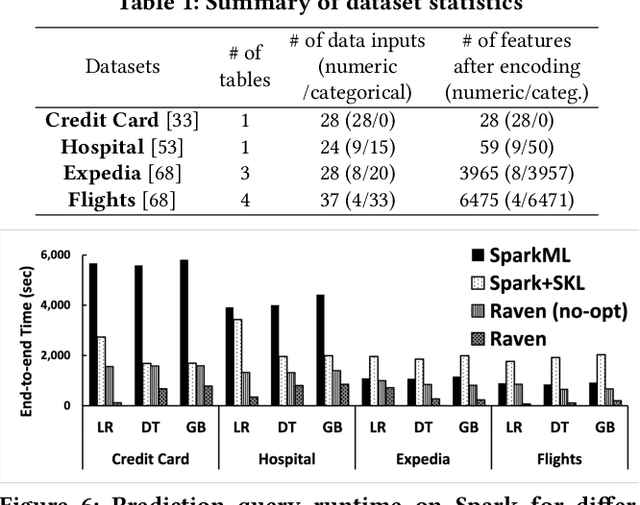
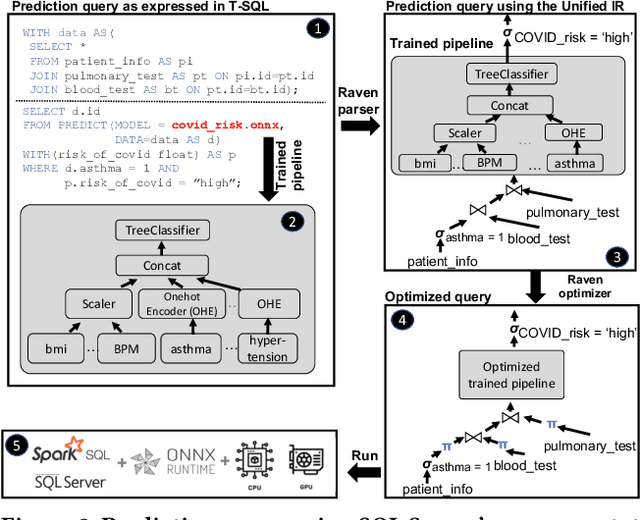

Abstract:Prediction queries are widely used across industries to perform advanced analytics and draw insights from data. They include a data processing part (e.g., for joining, filtering, cleaning, featurizing the datasets) and a machine learning (ML) part invoking one or more trained models to perform predictions. These parts have so far been optimized in isolation, leaving significant opportunities for optimization unexplored. We present Raven, a production-ready system for optimizing prediction queries. Raven follows the enterprise architectural trend of collocating data and ML runtimes. It relies on a unified intermediate representation that captures both data and ML operators in a single graph structure to unlock two families of optimizations. First, it employs logical optimizations that pass information between the data part (and the properties of the underlying data) and the ML part to optimize each other. Second, it introduces logical-to-physical transformations that allow operators to be executed on different runtimes (relational, ML, and DNN) and hardware (CPU, GPU). Novel data-driven optimizations determine the runtime to be used for each part of the query to achieve optimal performance. Our evaluation shows that Raven improves performance of prediction queries on Apache Spark and SQL Server by up to 13.1x and 330x, respectively. For complex models where GPU acceleration is beneficial, Raven provides up to 8x speedup compared to state-of-the-art systems.
Data Debugging with Shapley Importance over End-to-End Machine Learning Pipelines
Apr 26, 2022

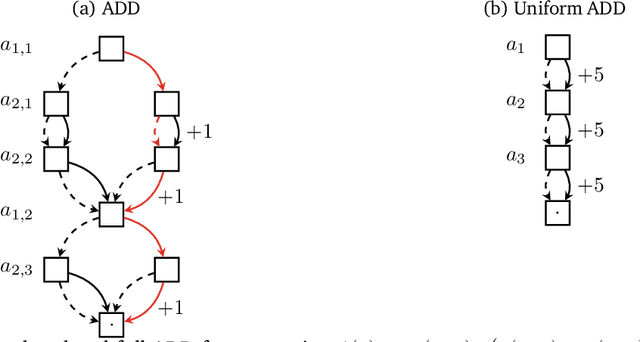
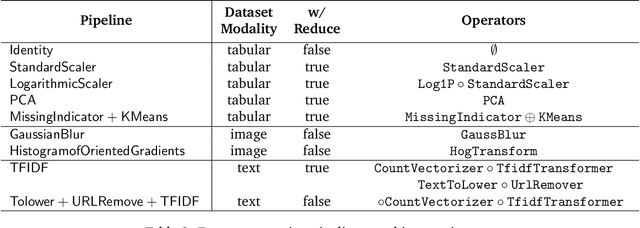
Abstract:Developing modern machine learning (ML) applications is data-centric, of which one fundamental challenge is to understand the influence of data quality to ML training -- "Which training examples are 'guilty' in making the trained ML model predictions inaccurate or unfair?" Modeling data influence for ML training has attracted intensive interest over the last decade, and one popular framework is to compute the Shapley value of each training example with respect to utilities such as validation accuracy and fairness of the trained ML model. Unfortunately, despite recent intensive interest and research, existing methods only consider a single ML model "in isolation" and do not consider an end-to-end ML pipeline that consists of data transformations, feature extractors, and ML training. We present DataScope (ease.ml/datascope), the first system that efficiently computes Shapley values of training examples over an end-to-end ML pipeline, and illustrate its applications in data debugging for ML training. To this end, we first develop a novel algorithmic framework that computes Shapley value over a specific family of ML pipelines that we call canonical pipelines: a positive relational algebra query followed by a K-nearest-neighbor (KNN) classifier. We show that, for many subfamilies of canonical pipelines, computing Shapley value is in PTIME, contrasting the exponential complexity of computing Shapley value in general. We then put this to practice -- given an sklearn pipeline, we approximate it with a canonical pipeline to use as a proxy. We conduct extensive experiments illustrating different use cases and utilities. Our results show that DataScope is up to four orders of magnitude faster over state-of-the-art Monte Carlo-based methods, while being comparably, and often even more, effective in data debugging.
Query Processing on Tensor Computation Runtimes
Mar 03, 2022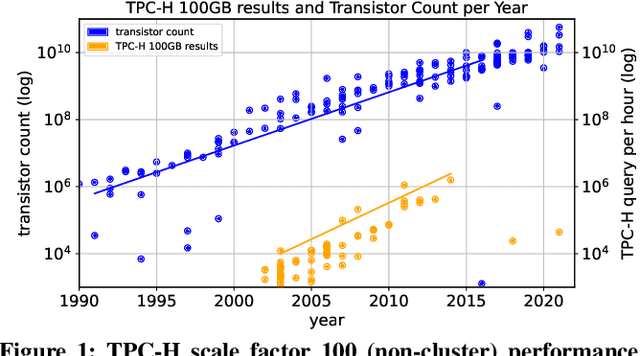

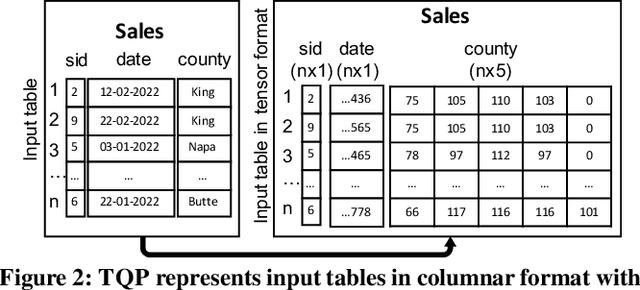
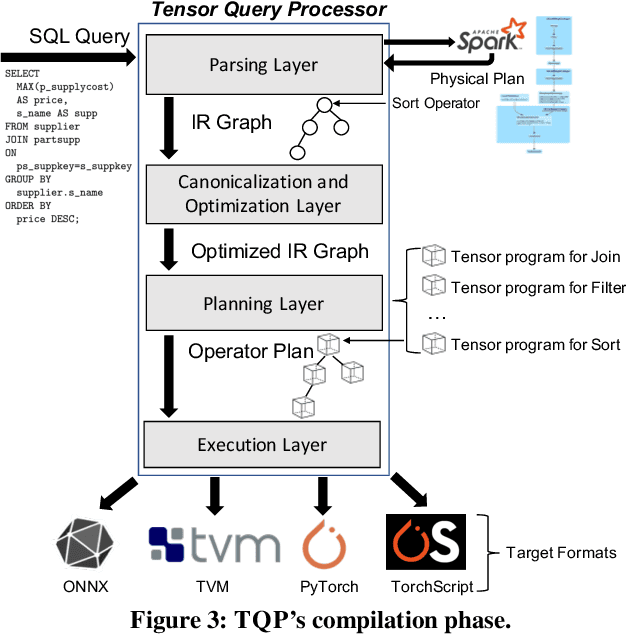
Abstract:The huge demand for computation in artificial intelligence (AI) is driving unparalleled investments in new hardware and software systems for AI. This leads to an explosion in the number of specialized hardware devices, which are now part of the offerings of major cloud providers. Meanwhile, by hiding the low-level complexity through a tensor-based interface, tensor computation runtimes (TCRs) such as PyTorch allow data scientists to efficiently exploit the exciting capabilities offered by the new hardware. In this paper, we explore how databases can ride the wave of innovation happening in the AI space. Specifically, we present Tensor Query Processor (TQP): a SQL query processor leveraging the tensor interface of TCRs. TQP is able to efficiently run the full TPC-H benchmark by implementing novel algorithms for executing relational operators on the specialized tensor routines provided by TCRs. Meanwhile, TQP can target various hardware while only requiring a fraction of the usual development effort. Experiments show that TQP can improve query execution time by up to 20x over CPU-only systems, and up to 5x over specialized GPU solutions. Finally, TQP can accelerate queries mixing ML predictions and SQL end-to-end, and deliver up to 5x speedup over CPU baselines.
Phoebe: A Learning-based Checkpoint Optimizer
Oct 05, 2021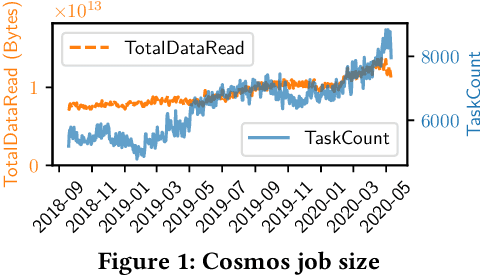
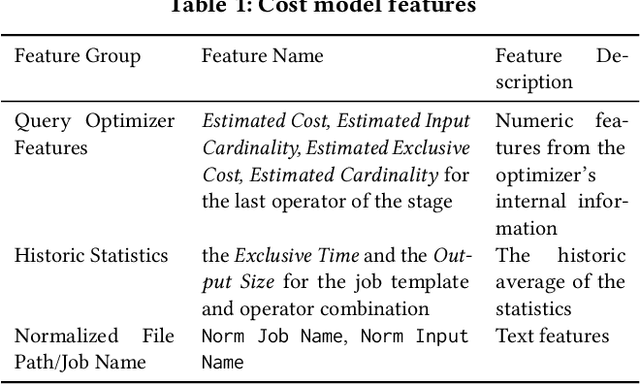

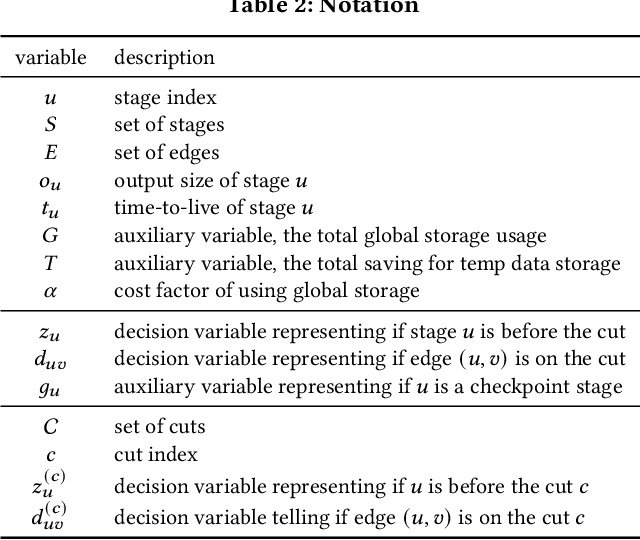
Abstract:Easy-to-use programming interfaces paired with cloud-scale processing engines have enabled big data system users to author arbitrarily complex analytical jobs over massive volumes of data. However, as the complexity and scale of analytical jobs increase, they encounter a number of unforeseen problems, hotspots with large intermediate data on temporary storage, longer job recovery time after failures, and worse query optimizer estimates being examples of issues that we are facing at Microsoft. To address these issues, we propose Phoebe, an efficient learning-based checkpoint optimizer. Given a set of constraints and an objective function at compile-time, Phoebe is able to determine the decomposition of job plans, and the optimal set of checkpoints to preserve their outputs to durable global storage. Phoebe consists of three machine learning predictors and one optimization module. For each stage of a job, Phoebe makes accurate predictions for: (1) the execution time, (2) the output size, and (3) the start/end time taking into account the inter-stage dependencies. Using these predictions, we formulate checkpoint optimization as an integer programming problem and propose a scalable heuristic algorithm that meets the latency requirement of the production environment. We demonstrate the effectiveness of Phoebe in production workloads, and show that we can free the temporary storage on hotspots by more than 70% and restart failed jobs 68% faster on average with minimum performance impact. Phoebe also illustrates that adding multiple sets of checkpoints is not cost-efficient, which dramatically reduces the complexity of the optimization.
A Tensor Compiler for Unified Machine Learning Prediction Serving
Oct 19, 2020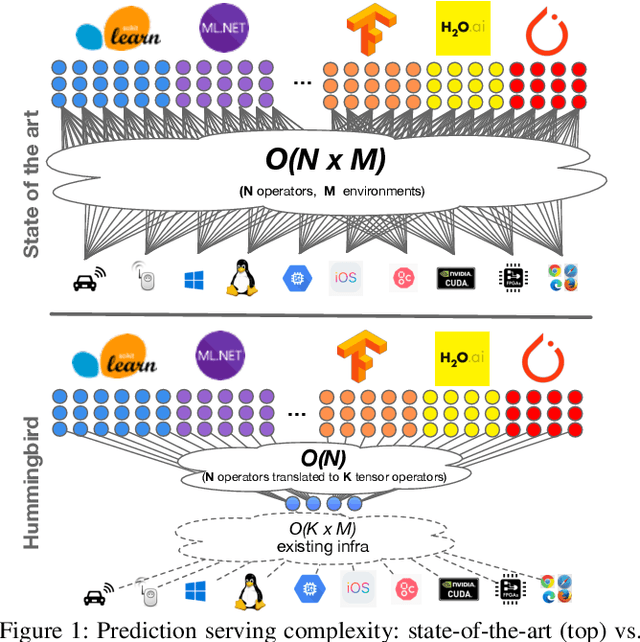
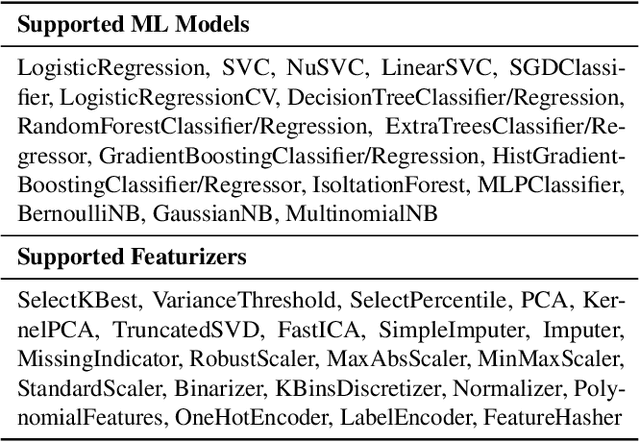


Abstract:Machine Learning (ML) adoption in the enterprise requires simpler and more efficient software infrastructure---the bespoke solutions typical in large web companies are simply untenable. Model scoring, the process of obtaining predictions from a trained model over new data, is a primary contributor to infrastructure complexity and cost as models are trained once but used many times. In this paper we propose HUMMINGBIRD, a novel approach to model scoring, which compiles featurization operators and traditional ML models (e.g., decision trees) into a small set of tensor operations. This approach inherently reduces infrastructure complexity and directly leverages existing investments in Neural Network compilers and runtimes to generate efficient computations for both CPU and hardware accelerators. Our performance results are intriguing: despite replacing imperative computations (e.g., tree traversals) with tensor computation abstractions, HUMMINGBIRD is competitive and often outperforms hand-crafted kernels on micro-benchmarks on both CPU and GPU, while enabling seamless end-to-end acceleration of ML pipelines. We have released HUMMINGBIRD as open source.
Data Science through the looking glass and what we found there
Dec 19, 2019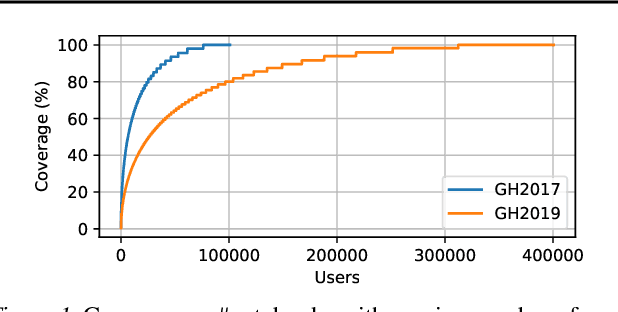
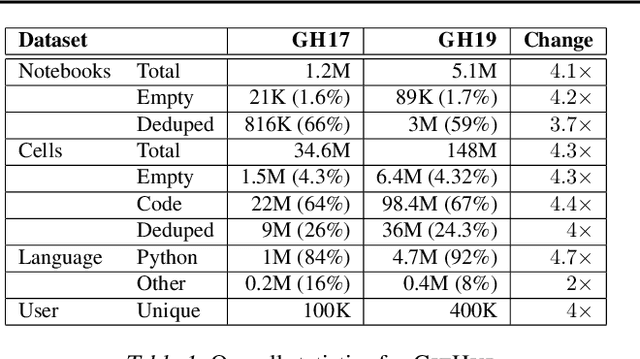
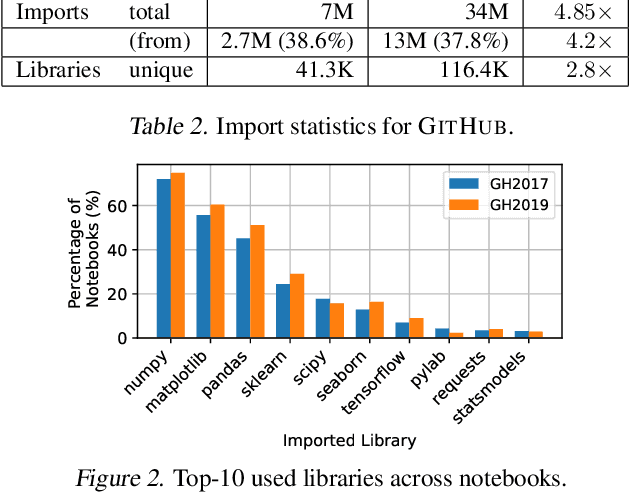
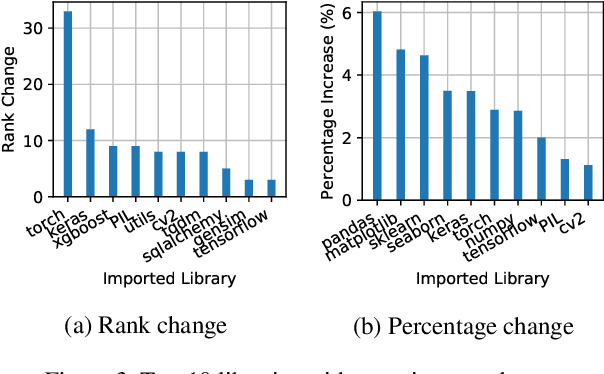
Abstract:The recent success of machine learning (ML) has led to an explosive growth both in terms of new systems and algorithms built in industry and academia, and new applications built by an ever-growing community of data science (DS) practitioners. This quickly shifting panorama of technologies and applications is challenging for builders and practitioners alike to follow. In this paper, we set out to capture this panorama through a wide-angle lens, by performing the largest analysis of DS projects to date, focusing on questions that can help determine investments on either side. Specifically, we download and analyze: (a) over 6M Python notebooks publicly available on GITHUB, (b) over 2M enterprise DS pipelines developed within COMPANYX, and (c) the source code and metadata of over 900 releases from 12 important DS libraries. The analysis we perform ranges from coarse-grained statistical characterizations to analysis of library imports, pipelines, and comparative studies across datasets and time. We report a large number of measurements for our readers to interpret, and dare to draw a few (actionable, yet subjective) conclusions on (a) what systems builders should focus on to better serve practitioners, and (b) what technologies should practitioners bet on given current trends. We plan to automate this analysis and release associated tools and results periodically.
Extending Relational Query Processing with ML Inference
Nov 01, 2019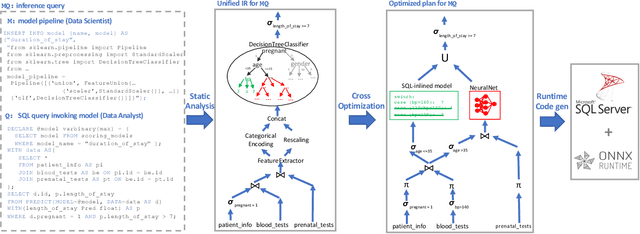

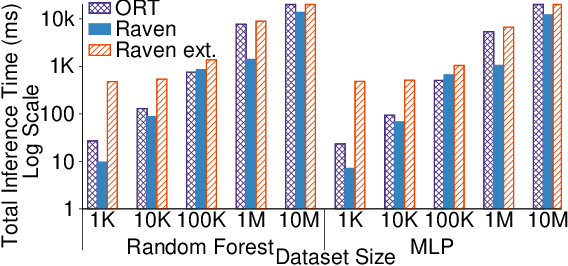
Abstract:The broadening adoption of machine learning in the enterprise is increasing the pressure for strict governance and cost-effective performance, in particular for the common and consequential steps of model storage and inference. The RDBMS provides a natural starting point, given its mature infrastructure for fast data access and processing, along with support for enterprise features (e.g., encryption, auditing, high-availability). To take advantage of all of the above, we need to address a key concern: Can in-RDBMS scoring of ML models match (outperform?) the performance of dedicated frameworks? We answer the above positively by building Raven, a system that leverages native integration of ML runtimes (i.e., ONNX Runtime) deep within SQL Server, and a unified intermediate representation (IR) to enable advanced cross-optimizations between ML and DB operators. In this optimization space, we discover the most exciting research opportunities that combine DB/Compiler/ML thinking. Our initial evaluation on real data demonstrates performance gains of up to 5.5x from the native integration of ML in SQL Server, and up to 24x from cross-optimizations--we will demonstrate Raven live during the conference talk.
Cloudy with high chance of DBMS: A 10-year prediction for Enterprise-Grade ML
Aug 30, 2019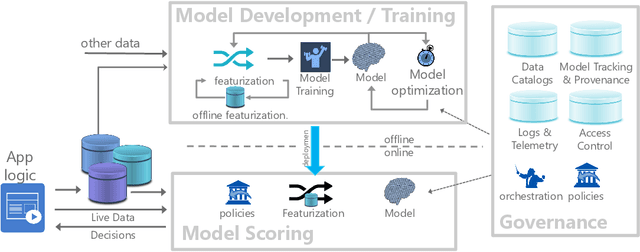
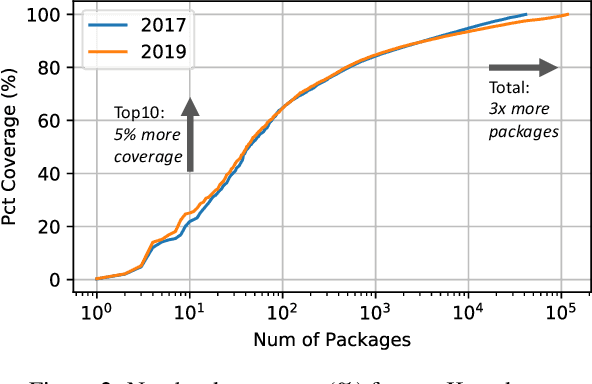
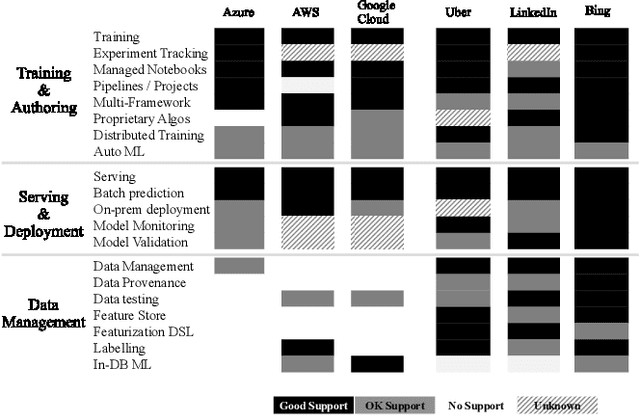
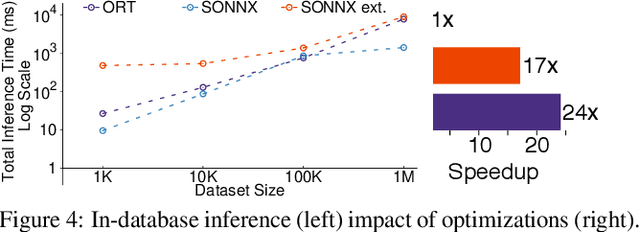
Abstract:Machine learning (ML) has proven itself in high-value web applications such as search ranking and is emerging as a powerful tool in a much broader range of enterprise scenarios including voice recognition and conversational understanding for customer support, autotuning for videoconferencing, inteligent feedback loops in largescale sysops, manufacturing and autonomous vehicle management, complex financial predictions, just to name a few. Meanwhile, as the value of data is increasingly recognized and monetized, concerns about securing valuable data and risks to individual privacy have been growing. Consequently, rigorous data management has emerged as a key requirement in enterprise settings. How will these trends (ML growing popularity, and stricter data governance) intersect? What are the unmet requirements for applying ML in enterprise settings? What are the technical challenges for the DB community to solve? In this paper, we present our vision of how ML and database systems are likely to come together, and early steps we take towards making this vision a reality.
 Add to Chrome
Add to Chrome Add to Firefox
Add to Firefox Add to Edge
Add to Edge